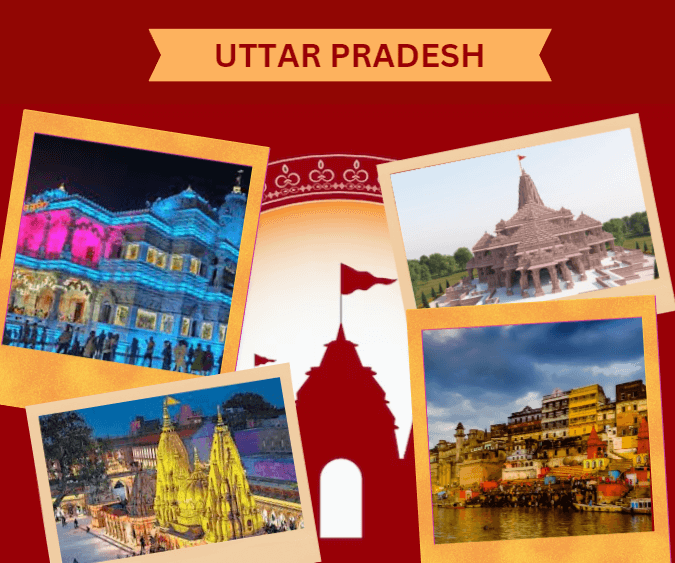
UTTAR PRADESH
Sanctified by the holy Ganges, the state of Uttar Pradesh is a paradoxical destination in India. It is the same land, where Taj Mahal wins over millions of tourists every year making it one of the most popular places in the state. Giving a good run to the epitome of love is Varanasi, whose ghats and spiritual vitality beguiles believers and wanderlusters alike. Uttar Pradesh bathe in the charm of Buddhist sites, which with its magnificent history and monuments add richness to tourism in Uttar Pradesh. Offering itself for the sacred confluence of Ganges, Yamuna and the mythical River Saraswati and being the host of world's largest religious assemblage (Kumbh Mela), Uttar Pradesh offer such sightseeing places that condescends it to visitors as an unmatched destination in the country. The state is humbled by the existence of places like Ayodhya and Mathura, where even the Gods agreed on taking birth in the human form. Exhibiting a vivid collection of architectural marvels, demonstrating the brilliant fusion of cultural and traditional thoughts, it boasts a visual treat like no other.
Ayodhya
An ancient town, Ayodhya is regarded as one of the seven sacred cities of the Hindus, revered because of its association in the great Indian epic poem Ramayana with the birth of Rama and with the rule of his father, Dasharatha.
Varanasi
Varanasi is a city in the northern Indian state of Uttar Pradesh dating to the 11th century B.C. Regarded as the spiritual capital of India, the city draws Hindu pilgrims who bathe in the Ganges River’s sacred waters and perform funeral rites. Along the city's winding streets are some 2,000 temples, including Kashi Vishwanath, the “Golden Temple,” dedicated to the Hindu god Shiva.
Mathura
Mathura is a sacred city in Uttar Pradesh, northern India. The deity Lord Krishna is said to have been born on the site of Sri Krishna Janma Bhoomi, a Hindu temple. Dotting the Yamuna River are 25 ghats (flights of steps down to the water), of which Vishram Ghat is considered the holiest. Sati Burj is a 16th-century memorial tower. Dwarkadhish Temple has a carved entrance and a black-marble idol of Lord Krishna.
Vrindava
Vrindavan is a holy town in Uttar Pradesh, northern India. The Hindu deity Krishna is said to have spent his childhood here. It’s home to temples, many dedicated to Krishna and his lover, the deity Radha. At Banke Bihari Temple, the curtain in front of Krishna’s statue is opened and closed every few minutes. At Radha Raman Temple, a gold plate beside Krishna signifies Radha. Prem Mandir is a huge white marble temple.
Agra
Agra is best known for the Taj Mahal (17th century), designated a UNESCO World Heritage site in 1983. A complex mausoleum, the Taj Mahal is often considered to be the world's best example of Mughal architecture. The Mughal emperor Shah Jahān built it for his favourite wife, Mumtāz Maḥal, in the mid-17th century.
Gokul
Gokul is a town in the Mathura district of the Indian state of Uttar Pradesh. It is located 15 kilometres south-east of Mathura. According to Bhagavata Purana, Krishna spent his childhood in Gokul.


